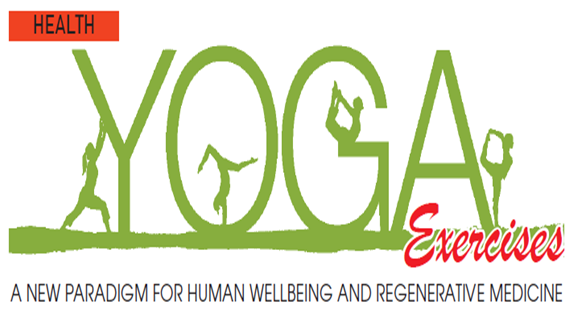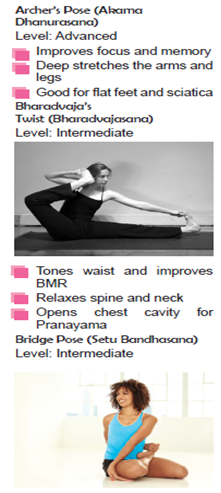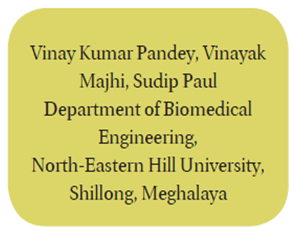
Yoga in regenerative medicine facilitates better recovery with ease by providing solutions for various diseases that plague mankind. The rebuilding of connective tissue via the technique of yoga and therapy is a highly reliable, natural, cost effective and a non surgical treatment option without any side effect and harm. Yoga is well known form of treatment from ancient days in rebuilding synaptic connection and the treatment of blood related disorder and respiration neuronal disorder in coordinating mind, body and spirit. Yoga and pranayama originated in India and is now being practiced all over the world to harvest its medicinal and therapeutics benefits in health care. Practicing yoga a non-invasive way to promotes trafficking of the stem cells from bone marrow tissue regeneration, repair and to take care of daily wear and tear and degenerating tissues.
Breathing exercises promotes the mesenchymal stromal cells (MSCs) from bone marrow to enter the peripheral circulation intermittently to repair maintains and regrow the damaged cells and hence these cells help in maintaining the tissue and organ homeostasis. So far, the chemical stimulation of bone marrow has been widely used employing injection of colony stimulating factor. The role of the yoga therapy from its physical factors especially on stem cells trafficking from bone marrow, delays senescence, improves the physiological functions of heart and lung and yoga postures make the body elastic. Yoga breathing exercises addresses cognitive improvement through increased positive energy (vital energy) and consciousness as we know breathing is physical part of thinking and thinking is psychological part of breathing by balancing emotions and bringing peace in the mind. Entering Lopebet Casino involves a simple registration process followed by an easy login using your credentials. The casino https://lopebet-casino.in/registration.html ensures secure access through strong passwords and two-factor authentication. Pranayam part of yoga improves the autonomic functions and cardio respiratory system including will power, thinking, oxidative stress level and weight loss. It is used in purification of nervous system by cleaning approximately 72000 channels of human body. The various form of therapy that is used in tissue regeneration is guidance therapy, bimolecular therapy and cellular therapy. Guided tissue regeneration (GTR) is an approach for regenerating defects that have been developed as a result of periodontitis to grow. Therefore, appropriate periodontal treatments are to be completed before GTR is initiated and are leading to a predictable positive outcome when used in proper combination in selected defects. The clinician should have to attempt to differentiate between various techniques that are in recent use in depth and with acceptable results and those that are still experimental, although promising. Research papers should be critically
marrow to enter the peripheral circulation intermittently to repair maintains and regrow the damaged cells and hence these cells help in maintaining the tissue and organ homeostasis. So far, the chemical stimulation of bone marrow has been widely used employing injection of colony stimulating factor. The role of the yoga therapy from its physical factors especially on stem cells trafficking from bone marrow, delays senescence, improves the physiological functions of heart and lung and yoga postures make the body elastic. Yoga breathing exercises addresses cognitive improvement through increased positive energy (vital energy) and consciousness as we know breathing is physical part of thinking and thinking is psychological part of breathing by balancing emotions and bringing peace in the mind. Entering Lopebet Casino involves a simple registration process followed by an easy login using your credentials. The casino https://lopebet-casino.in/registration.html ensures secure access through strong passwords and two-factor authentication. Pranayam part of yoga improves the autonomic functions and cardio respiratory system including will power, thinking, oxidative stress level and weight loss. It is used in purification of nervous system by cleaning approximately 72000 channels of human body. The various form of therapy that is used in tissue regeneration is guidance therapy, bimolecular therapy and cellular therapy. Guided tissue regeneration (GTR) is an approach for regenerating defects that have been developed as a result of periodontitis to grow. Therefore, appropriate periodontal treatments are to be completed before GTR is initiated and are leading to a predictable positive outcome when used in proper combination in selected defects. The clinician should have to attempt to differentiate between various techniques that are in recent use in depth and with acceptable results and those that are still experimental, although promising. Research papers should be critically evaluated and cross verified for adequacy of controls, selection, methods of evaluation, and long-term postoperative results. In addition, the clinician and health professional should remember and take care of the fact that he or she is seeking “clinical” success, which is not always similar to “statistical” success. A gain in clinical attachment of half a millimetre may be statistically significant but not clinically significant.
evaluated and cross verified for adequacy of controls, selection, methods of evaluation, and long-term postoperative results. In addition, the clinician and health professional should remember and take care of the fact that he or she is seeking “clinical” success, which is not always similar to “statistical” success. A gain in clinical attachment of half a millimetre may be statistically significant but not clinically significant.
To read the further article please get your copy of Eastern Panorama March issue @http://www.magzter.com/IN/Hill-Publications/Eastern-Panorama/News/ or mail to contact @easternpanorama.in


